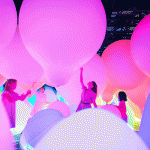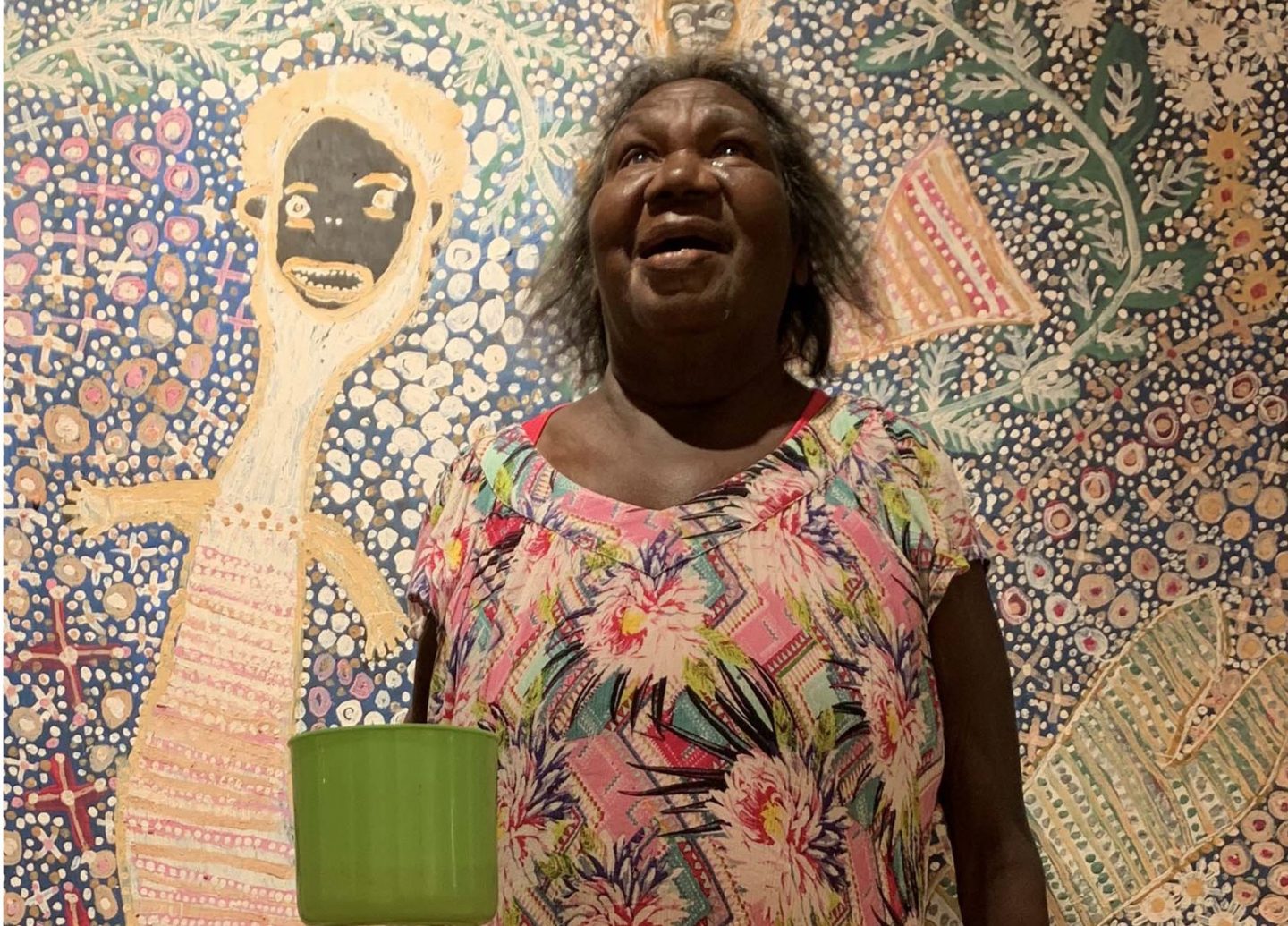
This post is the second in a series that explores the childhood experiences of artists. In each post, a different esteemed artist shares their account of the people and experiences that inspired them to pursue a career in the field. The first post featured the story of Ben Quilty who shared his story of growing up on the outskirts of Sydney, Australia.
This blog post features the work of Djerrkŋu Yunupiŋu. Djerrkŋu is an Indigenous artist based in Yirrkala in East Arnhem Land, Australia. Born near the Mata Mata community on Inglis Island, she is part of the Gumatj clan.
Djerrkŋu’s art practices draws on weaving, healing, printmaking, and painting techniques to share ancestral stories. She was a finalist at this year’s National Aboriginal and Torres Strait Islander Art Awards in Australia.
“Weaving ancestral stories” -Djerrkŋu Yunupiŋu’s story of art in childhood
When I was young, I worked at the kindergarten with children in Yirrkala teaching Yolŋu stories. I also learned at the school there. An old lady used to come to our classroom and teach us.
She taught us how to weave, how to paint, and how to make other things. She was also a very talented weaver. Her name was Daymuni.
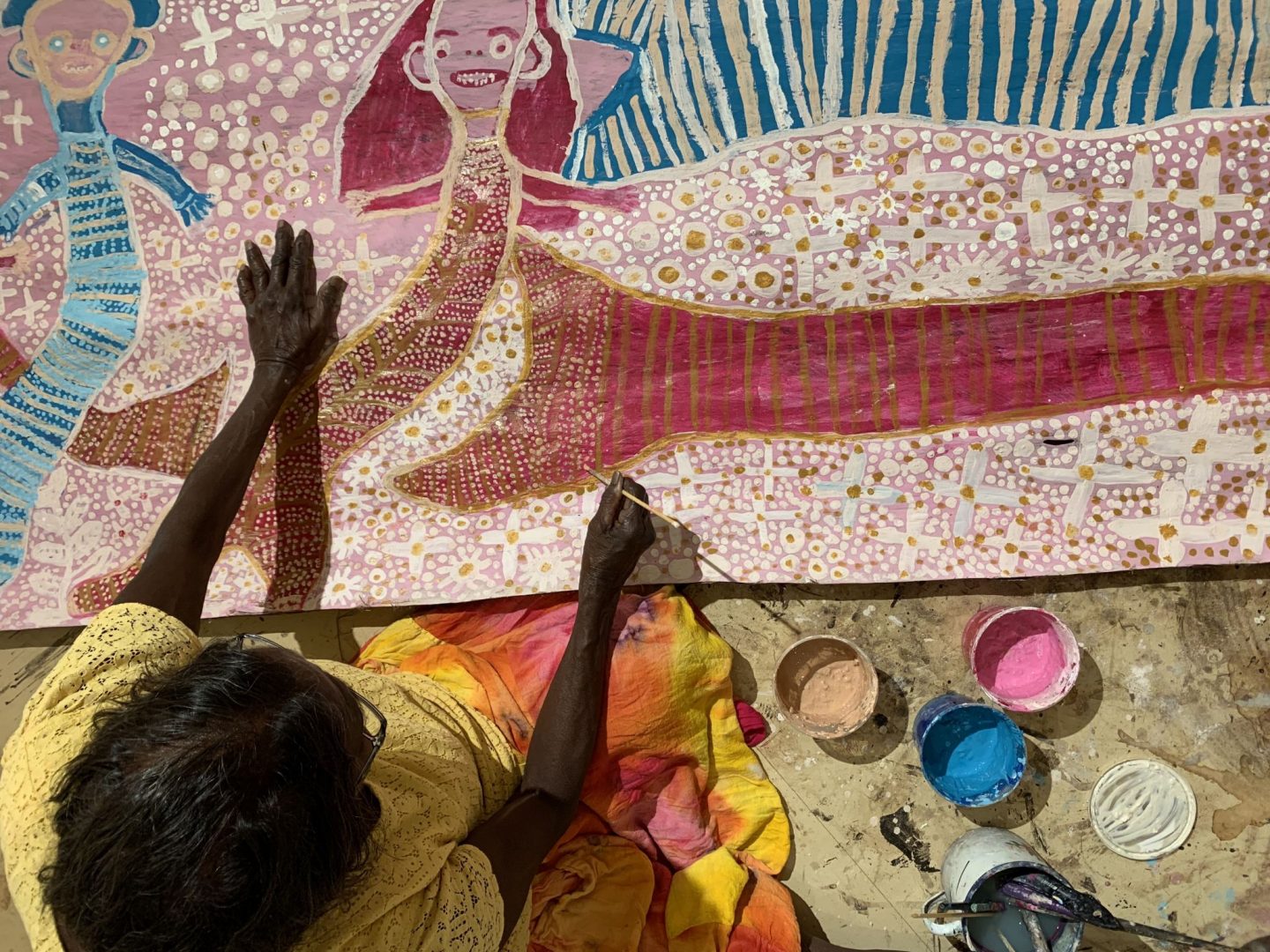
When I work as an artist now, I picture the stories that were told to me by her and by my father and my mother. My mother was a very good hunter, weaver, and mother. I learned from them all and I am still weaving today.
At school, I also learned art from a Fijian lady. She used to come and teach us buŋgul djäma (dancing). She would sew a brown and red material together to make a skirt and hat. She put pretty flowers on our heads and then we would dance Pacific Island dances together.
It was another sort of dancing to the Balanda (Anglo) way. It was island dancing. She was a great teacher. Her husband and her family still live here in Yirrkala.
I believe it is important for children to learn art. When they do this, they can learn about their culture, other cultures, and different ways of living. For me, it was the Balanda way, the Yolŋu way, the Fijian way. All three ways of learning!
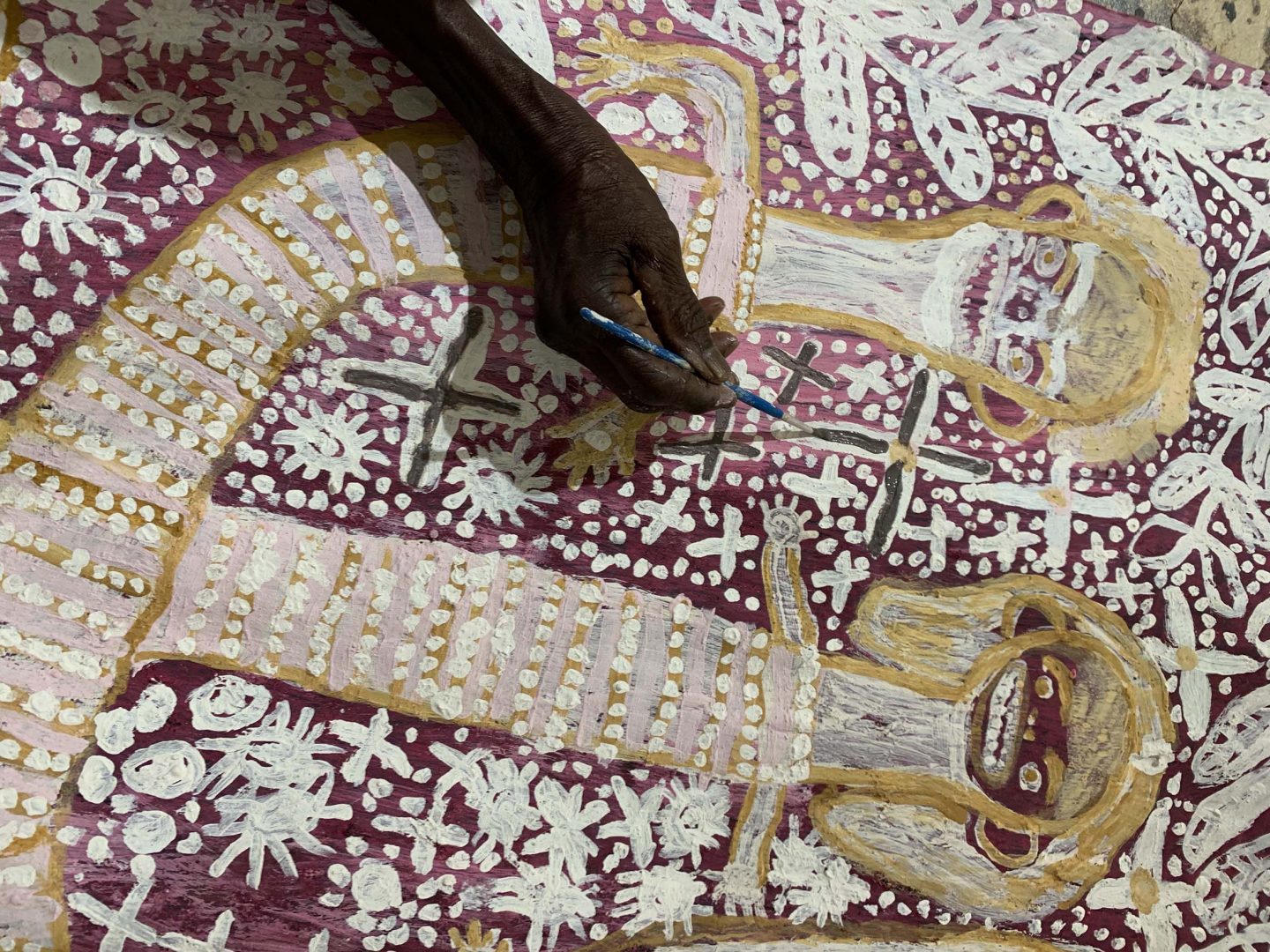
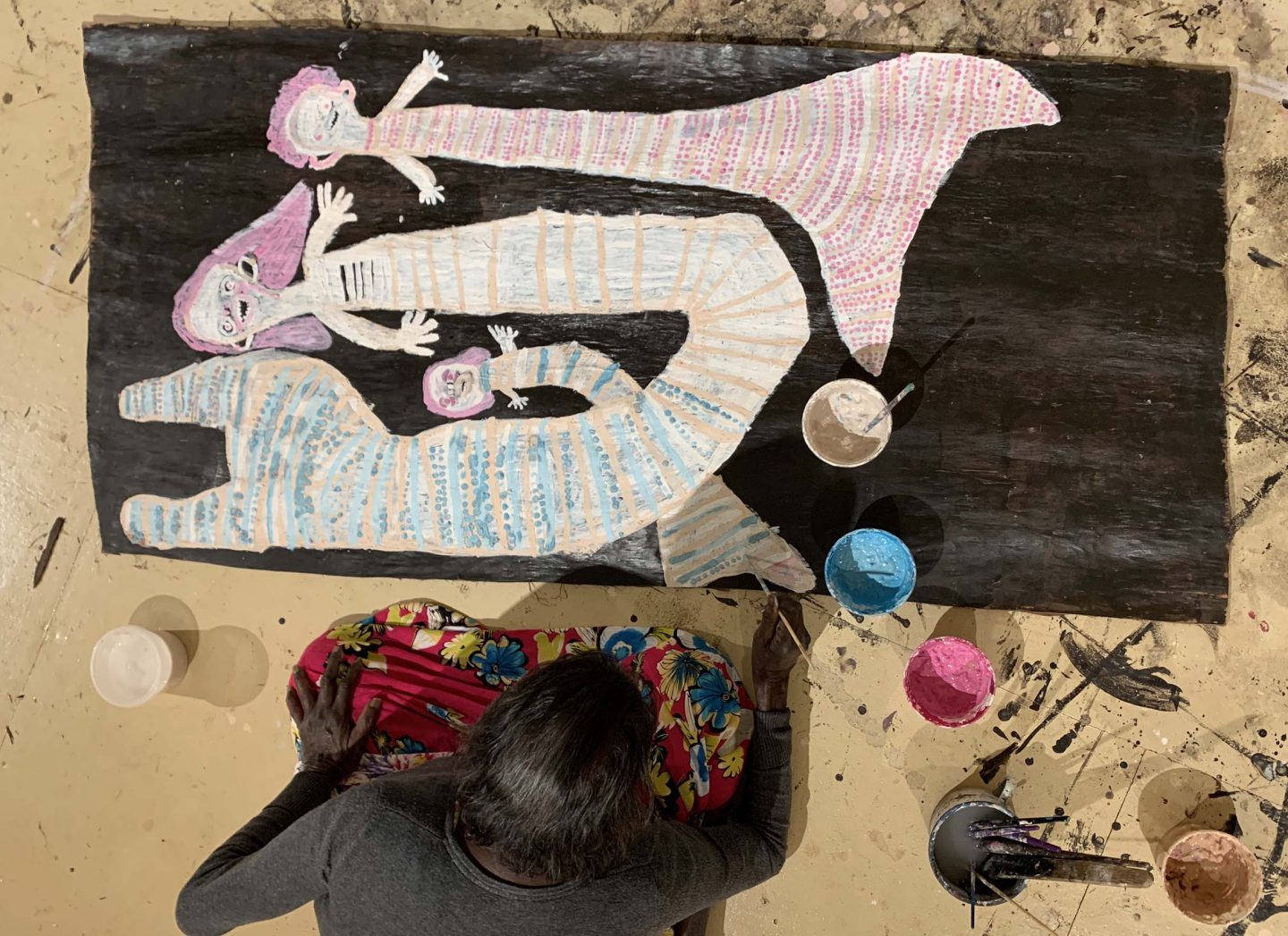
Further Links
The National Museum of Australia has put together this great blog post on the history and customs of the Yolŋu people (Djerrkŋu Yunupiŋu’s clan) of north-east Arnhem Land.
Buku-Larrnggay Mulka Centre, who represents and sells Djerrkŋu’s artworks, is an Indigenous community art centre located in north-east Arnhem Land, Australia.
Vogue magazine has put together this article that shares 5 First Nations artists making headlines in 2020, featuring Djerrkŋu.
Related Posts
Froebel’s Gifts and Isamu Noguchi’s Playgrounds
Creativity and multiculturalism in children’s learning – an interview with artist Lorna Rose



